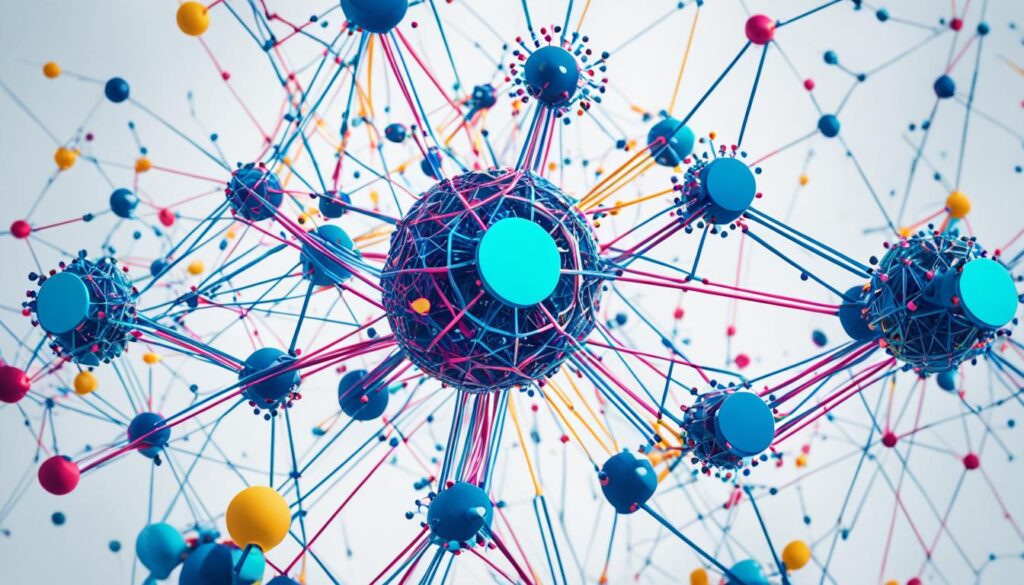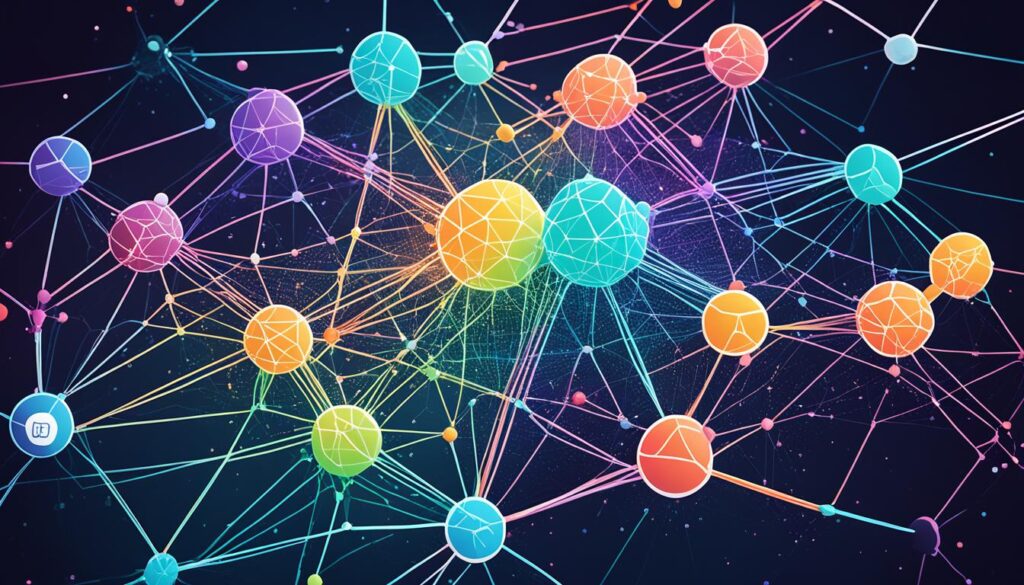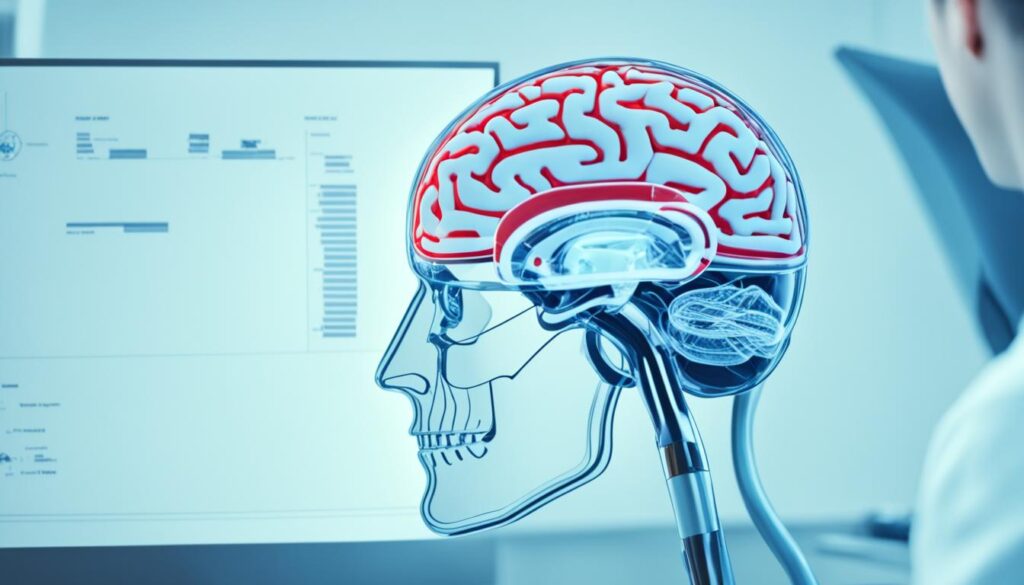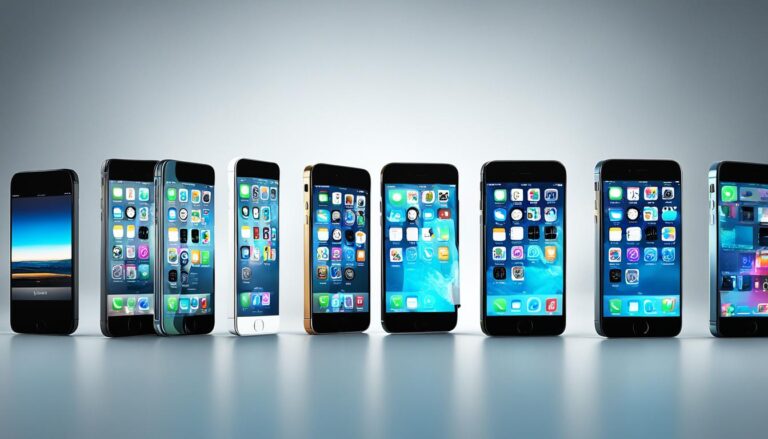OpenAI: Revolutionizing Artificial Intelligence

Imagine being in a bustling tech hub, surrounded by engineers who look excited. It’s 2015, and the tech world is buzzing about the next big leap in artificial intelligence. OpenAI was founded with a mission to develop AI technologies that benefit humanity. This focus on ethical AI innovation set it apart in a fast-paced industry1.
Picture Sam Altman, Greg Brockman, and Ilya Sutskever talking about the future of machine learning. They dreamed of AI that could understand and create human language like never before. Their dream came true with models like GPT-3 and GPT-4, changing fields from healthcare to finance1.
As we look at these tech breakthroughs, we see how far OpenAI has come. Each step brings us closer to a future where AI works with us, not just for us.
Key Takeaways
- OpenAI was founded in December 2015 with a mission to ensure AI benefits all humanity1.
- In 2019, OpenAI transitioned to a “capped” for-profit model to attract investments and talent while maintaining its ethical focus1.
- OpenAI received over a million signups for ChatGPT within the first five days of its launch in December 20221.
- Microsoft has significantly supported OpenAI with investments totaling $13 billion, owning roughly 49% of its equity12.
- OpenAI’s groundbreaking models like GPT-3 and GPT-4 continue to revolutionize advanced natural language processing12.
- OpenAI’s evolution signifies a remarkable journey from a nonprofit to an industry leader in AI innovation12.
Overview of OpenAI: Journey and Mission
OpenAI started with a dream to make artificial general intelligence (AGI) that helps everyone. It was set up in December 2015 with a big promise of $1 billion in funding3. This marked the beginning of its goal to make AI that is ethical and good for everyone.
Founding and Early Goals
OpenAI was created with a mission to make AGI a positive force for humanity4. The founders wanted to make sure AI was safe and transparent to avoid misuse. In 2018, they made a big step forward with GPT-1, starting a wave of important changes5. This set the stage for AI that respects human values and ethics.
Mission to Benefit Humanity
At the heart of OpenAI’s mission is the idea that AI should help and improve humanity, not hurt or use it for bad. By 2019, they had released GPT-2, showing their ongoing innovation5. OpenAI works with schools and research places to share knowledge and check each other’s work4. They changed to a ‘capped-profit’ model to make sure AI is developed in a way that’s good for everyone and the planet3. This shows OpenAI’s strong commitment to making AI that’s good for all of us.
The Evolution of OpenAI's Structure
Transition to OpenAI LP
Nonprofit Control and Equity Caps
OpenAI’s way of running things shows a big focus on doing well for society. The nonprofit part keeps control over OpenAI LP, making sure AI is used wisely7. The for-profit side also has limits on profits, sending extra money back for the public good7. This shows OpenAI’s goal to make AI safe, sustainable, and good for everyone, not just making money7.
Microsoft's Investment and its Impact
Microsoft’s big investments in OpenAI have changed the game for both companies. In 2019, Microsoft put in $1 billion, starting a big journey9. By 2023, they had invested over $13 billion, showing their strong support for AI technology910. This money has helped bring new AI solutions to the spotlight, highlighting Azure AI and AI supercomputing.
Initial Investments
The first $1 billion from Microsoft in 2019 started a new era of working together on cloud-based AI9. OpenAI’s models are now part of many Microsoft products like Office apps, Bing, Edge, and Windows9. Also, Microsoft engineers took six months to make a model as good as Google’s BERT, showing what they could do before these investments9.
Recent Multibillion Dollar Collaboration
Then, in January 2023, Microsoft added another $10 billion to their investment11. This move aims to boost AI supercomputing and advance AI technology11. They’re working on special supercomputers for OpenAI, showing how important strong infrastructure is for AI11. Plus, Microsoft Azure is the only cloud platform for OpenAI, making sure their AI solutions work well and grow11.
OpenAI's Core Products
OpenAI has created a wide range of products that are key for many uses. They focus on their strong foundation models. These include ChatGPT and ChatGPT Enterprise.
Foundation Models
OpenAI’s foundation models like GPT-3, GPT-4, and GPT-4o are crucial for making content and analyzing it. They are made to boost AI functions in many fields. The launch of these models has been a big step forward in AI, offering top-notch text and image understanding12.
These models help with many tasks, letting developers and companies make their own AI tools. OpenAI’s products have made making content easier and more accessible. This lets people try new skills and abilities12.
ChatGPT and ChatGPT Enterprise
ChatGPT and ChatGPT Enterprise are special versions of the GPT models for talking AI. They help both people and businesses have better conversations. When ChatGPT first came out in December 2022, it quickly got over a million users13.
ChatGPT Enterprise is made for businesses. It can be customized and fits into different work processes. It also meets strict security and privacy needs12. This means businesses can use ChatGPT Enterprise easily, making work better and improving customer service.
| Model | Primary Application | Key Industries |
|---|---|---|
| GPT-3 | Content Generation | Technology, Media |
| ChatGPT | Conversational AI | Customer Service, Healthcare |
| ChatGPT Enterprise | Enterprise Communication | Finance, Retail |
OpenAI keeps improving their products, especially GPT-3 and ChatGPT Enterprise. This shows their dedication to better conversational AI and foundation models. These AI tools make business communication better and help with efficiency and innovation in many areas.
Understanding OpenAI Features
OpenAI has made a big mark in the AI world. It offers many APIs to help companies use its basic models for making AI-driven solutions. OpenAI has products like ChatGPT, DALL-E 2, Codex, Whisper, Scholar, OpenAI Gym, and OpenAI API14. The OpenAI API is key for developers to add AI features like text creation, understanding language, and making responses to apps. Since starting in 2015, OpenAI has worked on AI and machine learning tools. This led to big models like GPT in 2018 and DALL-E in 202114
The Azure OpenAI service also offers models like GPT-4o, GPT-4 Turbo with Vision, GPT-4, GPT-3.5-Turbo, and Embeddings series for tasks like making content, summarizing, understanding images, searching semantically, and translating code15. This service uses REST APIs, Python SDK, and web interfaces to make it easy for users. It shows how machine learning infrastructure and AI-powered solutions can work together15. For instance, OpenAI’s predictive analytics can look at big data to give insights for better user engagement, showing how AI is used effectively16.
Also, managing identity with Microsoft Entra ID makes sure API access is secure and efficient, showing a strong machine learning infrastructure15. OpenAI has released AI products like GPT-3, Dall-E, Clip, ChatGPT, Codex, Whisper, and ChatGPT Enterprise, showing their dedication to new ideas16. By using prompt engineering, models like GPT-3, GPT-3.5, and GPT-4 can be guided better, making their answers more accurate and relevant. This is key for using AI applications in complex ways15.
OpenAI products like ChatGPT also save time and cut labor costs for companies14. If you want to automate tasks or make new AI solutions, OpenAI’s wide range of tools and APIs can help. They support many industry needs with their advanced generative AI abilities.
Recent Technological Advancements

GPT-4o: The New Flagship Model
Enhanced Multimodal Capabilities
| Interaction Mode | Capabilities | User Benefits |
|---|---|---|
| Multimodal | Combines text, audio, visual inputs | Natural and efficient interactions |
| Real-Time Response | Enhanced speed and language support | Faster and more accurate responses |
| Expanded Context Window | 128,000 tokens | Deeper and more meaningful conversations |
| Advanced Features | Math solutions, translations, facial interpretation | Versatile and practical applications |
Applications in Natural Language Processing
OpenAI’s language models, like GPT-3, have greatly improved AI’s ability to understand and create human language. These models are key to many NLP applications, from automated chats to creative writing. They’ve changed how machines help us in our daily communication.
These new tools are changing many areas, from education to city planning. They make learning fun and help plan cities better, making traffic flow smoother20. Companies use them for everything from writing emails to creating AI chatbots for talking to customers20. Whisper, another OpenAI model, is great at understanding different languages and accents, showing how NLP is used in many ways22.
| Model | Parameters | Applications |
|---|---|---|
| GPT-2 | 1.5 billion | Text Generation, AI Text Analysis |
| GPT-3 | 175 billion | AI Chatbots, Advanced NLP Tasks |
| GPT-3.5 | Enhanced Parameters | ChatGPT, Language Models for Businesses |
AI in Healthcare: OpenAI's Contributions
OpenAI is changing healthcare with its AI models. They make diagnoses and predictions more accurate, leading to better early detection and treatment plans. AI brings many benefits, like analyzing data in real-time, giving personalized advice, and making healthcare cheaper and more accessible to everyone23. GPT-4o can look through huge amounts of data to predict outbreaks and risks for patients24. It also helps doctors during surgeries and keeps an eye on patients’ health, spotting early signs of diseases24.
Diagnostics and Predictive Analytics
OpenAI is changing medical care with its AI in diagnostics and predictive analytics. GPT-4 is 40% better at giving accurate answers than before25. This means it can make precise diagnoses. OpenAI’s tech lets doctors check health data in real-time, helping them act fast if something goes wrong25. This is great for predicting patient risks and giving timely advice, which helps patients get better faster24.

Working with experts in machine learning and computer science is key to making healthcare better23. These partnerships help make AI in diagnostics and predictive analytics more reliable and effective for patient care AI.
Improving Patient Outcomes
OpenAI uses AI to make healthcare better by analyzing data and tailoring care to each patient. AI is making treatments more effective by considering a patient’s genes and lifestyle24. This reduces biases and improves care.
AI is also helping with mental health. Future versions of GPT-4o will offer support to those with mental health issues, making care better24. ChatGPT helps with medical records, making healthcare more efficient25. AI helps manage chronic conditions and catch diseases early, leading to better health outcomes.
OpenAI's Commitment to Ethical AI Development
Conclusion
OpenAI is all about doing things right and using AI for good31. They’re on a mission to make artificial general intelligence work for everyone.
FAQ
What is OpenAI and how was it founded?
OpenAI is a leader in artificial intelligence, starting as a nonprofit in 2015. It aimed to make AI that helps humanity, focusing on safety and benefits.
How did OpenAI transition to its current structure?
OpenAI changed from a nonprofit to a for-profit company, OpenAI LP, in 2019. This move drew more money and talent. Yet, it kept nonprofit rules and limits on equity for safe, sustainable AI.
What role does Microsoft play in OpenAI’s growth?
Microsoft has invested a lot in OpenAI since 2019, including a big deal in 2023. It gives OpenAI special computers and uses Azure as its cloud partner. This boosts OpenAI’s tech power.
What are some of the core products developed by OpenAI?
OpenAI made key products like GPT-3, GPT-4, and GPT-4o. These include ChatGPT and ChatGPT Enterprise. They improve how companies talk to customers with secure, customizable AI.
What makes GPT-4o a significant advancement in AI?
GPT-4o is a big step forward because it can handle text, audio, images, and videos. It answers fast and combines different inputs into one. This is a big leap in AI that can understand and respond to many types of information.
How does OpenAI contribute to healthcare?
OpenAI’s AI is changing healthcare by making diagnoses and predictions better. This leads to catching problems early, making better treatment plans, and improving patient care.
How does OpenAI ensure ethical AI development?
OpenAI focuses on ethical AI by prioritizing safety, being clear, and sticking to human values. It does research and works with others to tackle AI risks and make sure it helps everyone.
What are the capabilities of OpenAI’s foundation models?
OpenAI’s models like GPT-3 and GPT-4 are the base for many applications. They’re great at understanding and creating human language. This helps with things like writing, talking to customers, and analyzing texts.
What API features does OpenAI offer to businesses?
OpenAI gives businesses APIs to use its AI models for new projects. These APIs help improve products or create new ones. They make sure companies get strong AI solutions that fit their needs.
What does OpenAI’s commitment to sustainable AI development involve?
OpenAI aims for AI that’s good for more than just profits. It does this with things like equity limits and nonprofit checks. This keeps its work focused on helping society and being ethical.
How has OpenAI impacted the field of natural language processing?
OpenAI has changed natural language processing with its models like GPT-3. These models have made text generation, talking AI, and text analysis better. This has helped many areas and industries use AI in new ways.
Source Links
- OpenAI – Wikipedia – https://www.wikipedia.org/wiki/OpenAI
- Comparison of Artificial Intelligence Technologies Open AI vs Bard AI – https://www.internetsearchinc.com/comparison-of-artificial-intelligence-technologies-open-ai-vs-bard-ai/
- The History of OpenAI: The Evolution of Artificial Intelligence at OpenAI – https://digitalchew.com/2023/11/28/openai-history/
- The Evolution of OpenAI: A Historical Perspective | iCert Global – https://www.icertglobal.com/openai-blog/detail
- The Short History of OpenAI: A Journey Towards Democratizing AI – happy future AI – https://happyfutureai.com/the-short-history-of-openai-a-journey-towards-democratizing-ai/
- Quick Essay: A Short History of OpenAI – https://chamath.substack.com/p/a-short-history-of-openai
- How OpenAI’s “Corporate” Structure Evolved Since 2015 – https://maggiehealth.medium.com/how-openais-corporate-structure-evolved-since-2015-501c6e65136b
- The Evolution of OpenAI And The AI Industrial Revolution – FourWeekMBA – https://fourweekmba.com/openai/
- Microsoft’s OpenAI investment was triggered by Google fears, emails reveal – https://www.theverge.com/2024/5/1/24146302/microsoft-openai-investment-google-worries-internal-emails
- The Inside Story of Microsoft’s Partnership with OpenAI – https://www.newyorker.com/magazine/2023/12/11/the-inside-story-of-microsofts-partnership-with-openai
- Microsoft’s near-term fate is in OpenAI’s hands — for better or worse – https://finance.yahoo.com/news/microsofts-near-term-fate-is-in-openais-hands–for-better-or-worse-205250812.html
- What Is OpenAI? Learn About Its Mission, Products, and Key Advancements – https://www.grammarly.com/blog/what-is-openai/
- OpenAI – https://en.wikipedia.org/wiki/OpenAI
- What Is OpenAI? Everything You Need to Know – https://www.coursera.org/articles/what-is-openai
- What is Azure OpenAI Service? – Azure AI services – https://learn.microsoft.com/en-us/azure/ai-services/openai/overview
- What is OpenAI? Definition and History from TechTarget – https://www.techtarget.com/searchenterpriseai/definition/OpenAI
- OpenAI’s newest AI model can hold a humanlike conversation – https://www.nbcnews.com/tech/tech-news/openai-new-model-gpt-4o-rcna151947
- OpenAI’s new GPT-4o lets people interact using voice or video in the same model – https://www.technologyreview.com/2024/05/13/1092358/openais-new-gpt-4o-model-lets-people-interact-using-voice-or-video-in-the-same-model/
- OpenAI’s Latest Developments: Reasons Why You Should Add These Points to Your Tech Radar – https://www.linkedin.com/pulse/openais-latest-developments-reasons-why-you-should-add-rick-hightower-yxjac
- Exploring OpenAI’s Impact on Natural Language Processing – https://medium.com/@sinharohit3333/exploring-openais-impact-on-natural-language-processing-4eefa0813083
- Building NLP applications with Azure OpenAI – https://dev.to/willvelida/building-nlp-applications-with-azure-openai-2637
- OpenAI NLP Models – Originality.AI – https://originality.ai/blog/openai-nlp-models
- Seeking passionate collaborators to transform healthcare with AI – https://community.openai.com/t/seeking-passionate-collaborators-to-transform-healthcare-with-ai/191013
- Envisioning the future of health care with OpenAI’s GPT-4o: potential innovations under secure and unbiased conditions – https://www.kevinmd.com/2024/05/envisioning-the-future-of-health-care-with-openais-gpt-4o-potential-innovations-under-secure-and-unbiased-conditions.html
- Benefits of OpenAI in Healthcare – https://kms-healthcare.com/blog/benefits-openai-healthcare/
- The Ethical AI Imperative: How OpenAI is Leading the Way in Responsible Development – RTInsights – https://www.rtinsights.com/the-ethical-ai-imperative-how-openai-is-leading-the-way-in-responsible-development/
- Guiding the Future of AI: An Inside Look at OpenAI’s Ethical Policies – https://medium.com/@gargg/guiding-the-future-of-ai-an-inside-look-at-openais-ethical-policies-3503f17b6b0b
- OpenAI’s Commitment to Accessibility and Ethical AI – Democratizing AI – https://bhtsolutions.com/openais-commitment-to-accessibility-and-ethical-ai-democratizing-ai/
- Five conclusions after the chaos at OpenAI – https://medium.com/@frackers/five-conclusions-after-the-chaos-at-openai-1acead443600
- AI at a Crossroads: My Weekend Reflection on the OpenAI Upheaval – https://www.linkedin.com/pulse/ai-crossroads-my-weekend-reflection-openai-upheaval-jair-ribeiro-gkc9f
- How to stop models returning “preachy” conclusions – https://community.openai.com/t/how-to-stop-models-returning-preachy-conclusions/593742



